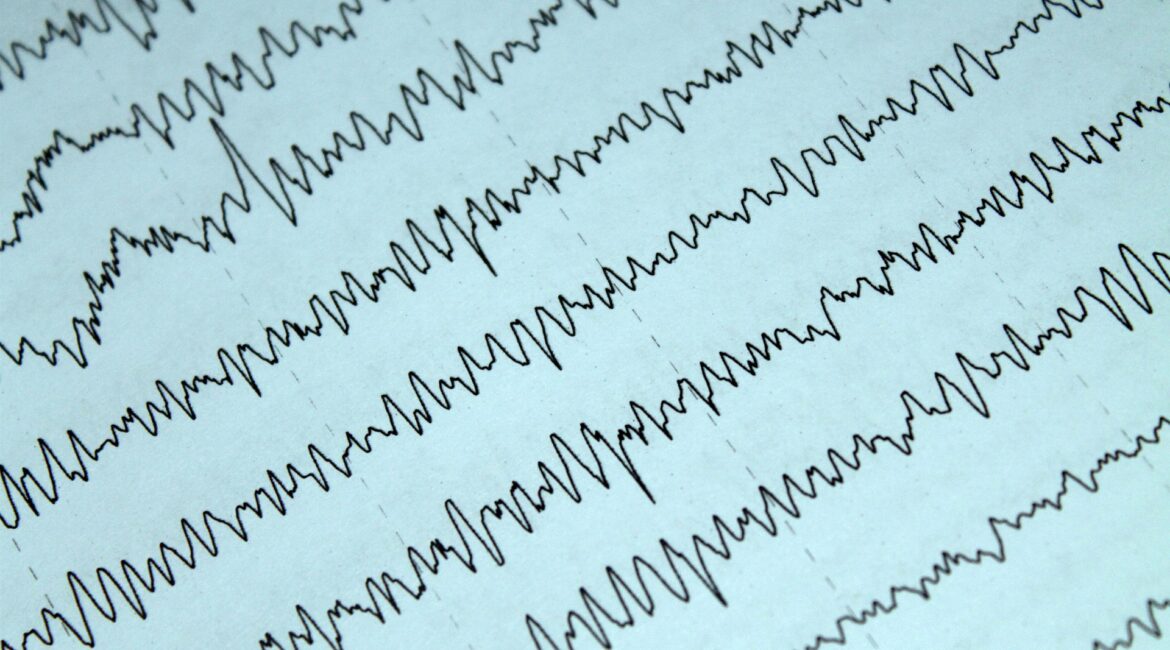The brain is composed of individual nerve cells called neurons. These cells communicate through electrical charges by way of specialized connections called synapses. As it governs, initiates, and responds to all our biological functions, the brain is vibrating at specific frequencies. These frequencies range from deep relaxation to high arousal, which our thoughts and emotions can affect. They are measured in hertz (Hz) using a machine called an electroencephalograph, or EEG, and are known as brain wave states.
From lowest frequency to high, the predominant types of brain-wave states are:
* Delta (appx. 0.5 to 4 Hz): These are the slowest recorded brain waves; we’re in this brain-wave state when asleep or unconscious.
* Theta (appx. 4–8 Hz): We’re in this frequency range when we are semiconscious; here we’re highly suggestible.
* Alpha (appx. 8–12 Hz): In the range, we’re relaxed and it is associated with daydreaming.
* Beta (appx. 12–30 Hz): In this frequency range, we’re at our most focused, processing information, solving problems, completing tasks.
These are general descriptions, and reactions can vary with the frequency. For instance, using an EEG, one can observe higher beta ranges in someone during a stressful situation. Focus heightens during the stress response. But after a while, such a high arousal state ceases to be useful for learning or problem solving. That brain-wave state requires a lot of energy to maintain. With the help of the survival chemicals produced during the stress response, knocks the body out of balance.
Brain Wave States Throughout Development
Between birth and about two years of age, the human brain predominantly operates in delta waves. Between two and six years of age, the brain moves into the slightly higher theta-wave state.
Recall that theta brain-wave states equal high suggestibility and unconscious processing. That’s why we say young children are like sponges: Without even trying, they’re absorbing information from the external environment and the people they interact with. They are forming memories of experiences they will carry into adulthood, creating the foundations of their personalities and behavior.
For those who have young kids, it is vitally important to understand that your every interaction with them is literally shaping their brains. Through your words and actions, you’re affecting their psychological and social development, their minds and their futures. So be careful!
You can also shape your own brain in adulthood by consciously shifting your brain wave state periodically throughout the day. Specifically, lowering your brain waves into the alpha/theta range through practices like mindfulness and meditation will rewire your brain for greater focus, concentration and emotional control.
Also, ensuring you are getting high quality sleep every night, which lowers your brain waves into the delta rage, is critical for learning, memory formation, and ensuring your brains stay “rewired” (locking in that neuroplasticity).
How to Affect Brain Waves
There are simple practices that can and do affect brain waves in a positive manner. Take a few minutes each day to consciously relax, become more mindful, and meditate. It only takes 5-10 minutes to realize the benefits, but 20min is ideal. Also, prioritize sleep. Try going to bed and waking up the same time each day and shoot for a minimum of 7 hours, but 8-9 is best for most adults.
THANK YOU for visiting Logic Mind & Health! If you like the platform, please subscribe to the podcast, the newsletter, or check out the book. Share our content, help us reach more people and improve the well-being of others.

